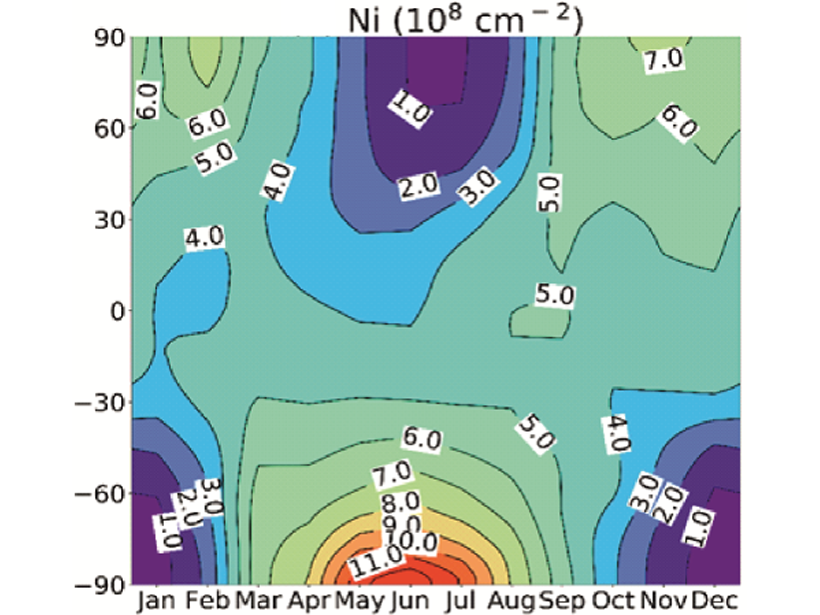Source: Journal of Geophysical Research: Space Physics
Every day approximately thirty tonnes of cosmic dust, which includes the metal Nickel (Ni), enters the upper mesosphere/lower thermosphere region. There it heats through friction with atmospheric molecules and subsequently ablates. This leads to the existence of a global metallic layer between the altitudes of about 80 and 110 kilometers.
Understanding the complex behavior of the Ni, which is influenced by atmospheric dynamics and chemical processes, requires complex modeling. In order to perform the modeling, Daly et al. [2020] determined the underpinning key chemical reactions for Ni in the laboratory and then included them in a set of more than forty neutral, ion-molecule and photochemical reactions describing Ni. Along with the meteoric input function, these were then embedded in the Whole Atmosphere Community Climate Model (WACCM).
The resulting model, WACCM-Ni, has been shown to replicate the observed Ni layer shape and its seasonal and latitudinal variations. Interestingly, the meteoric input function had to be reduced by a factor of about two compared to Iron (Fe), another metal of cosmic origin found in the upper atmosphere, suggesting that such modeling could contribute to studies of meteor composition.
Using this model, future measurements of the Ni-related chemiluminescence at visible wavelengths should help contribute to an improved understanding of both the dynamics and chemistry of this region of the atmosphere.
Citation: Daly, S. M., Feng, W., Mangan, T. P., Gerding, M., & Plane, J. M. C. [2020]. The Meteoric Ni Layer in the Upper Atmosphere. Journal of Geophysical Research: Space Physics, 125, e2020JA028083. https://doi.org/10.1029/2020JA028083
—Michael P. Hickey, Editor, JGR: Space Physics
Text © 2020. The authors. CC BY-NC-ND 3.0
Except where otherwise noted, images are subject to copyright. Any reuse without express permission from the copyright owner is prohibited.

